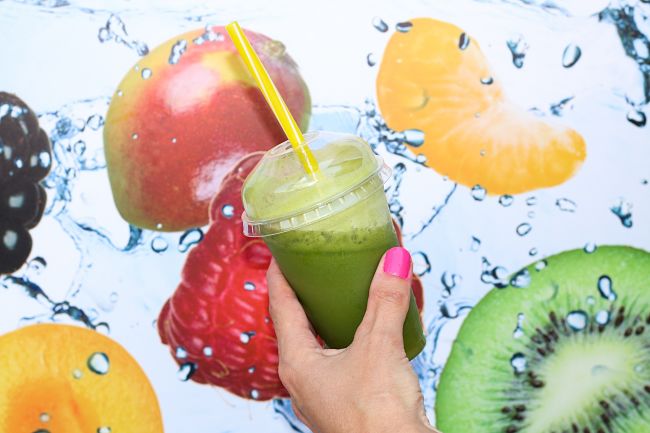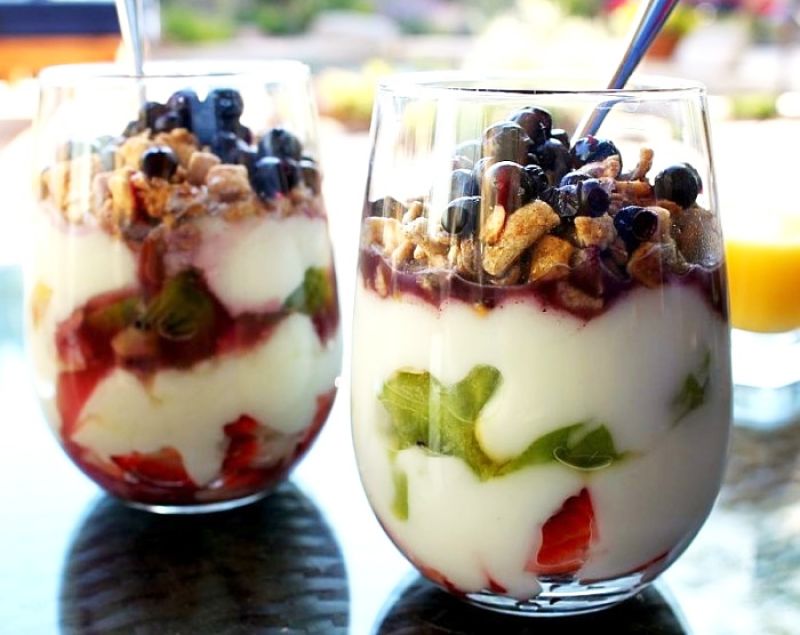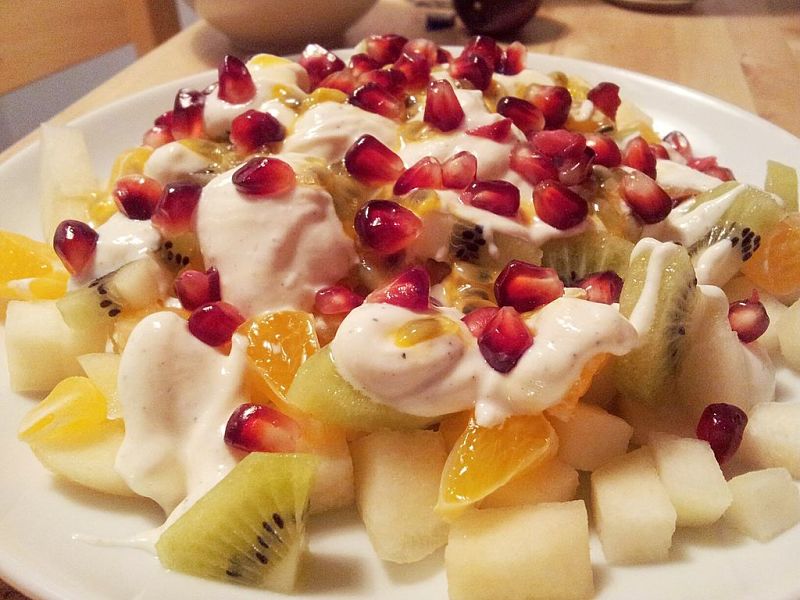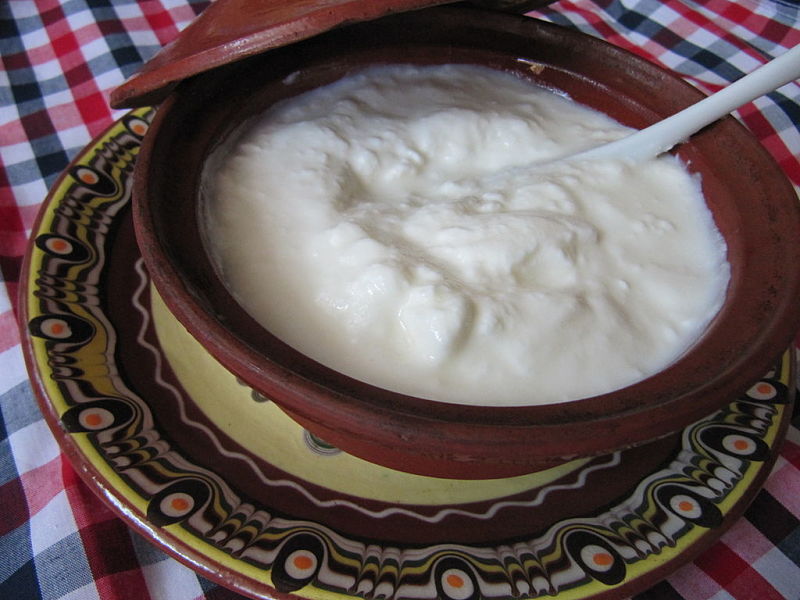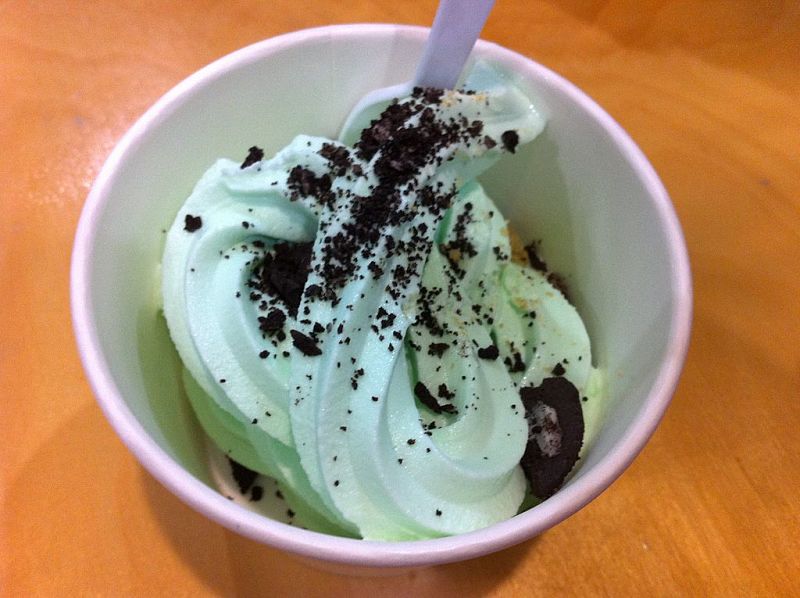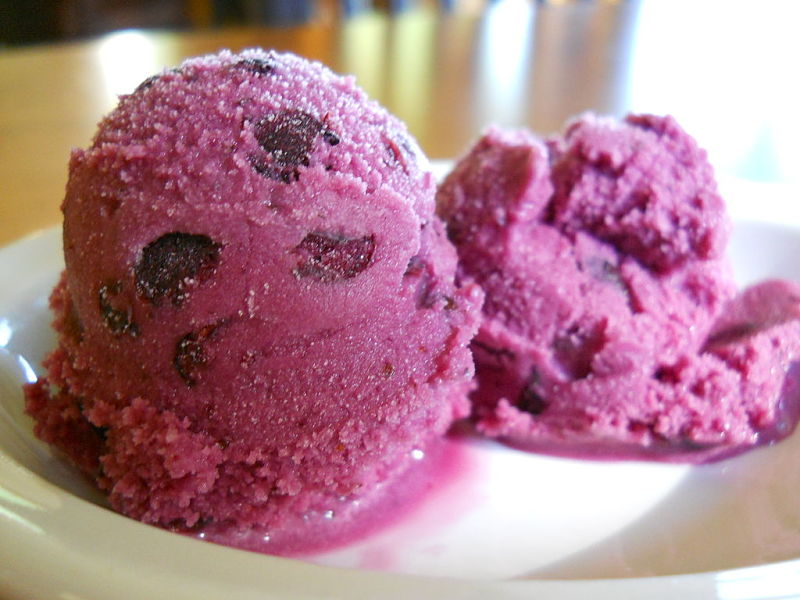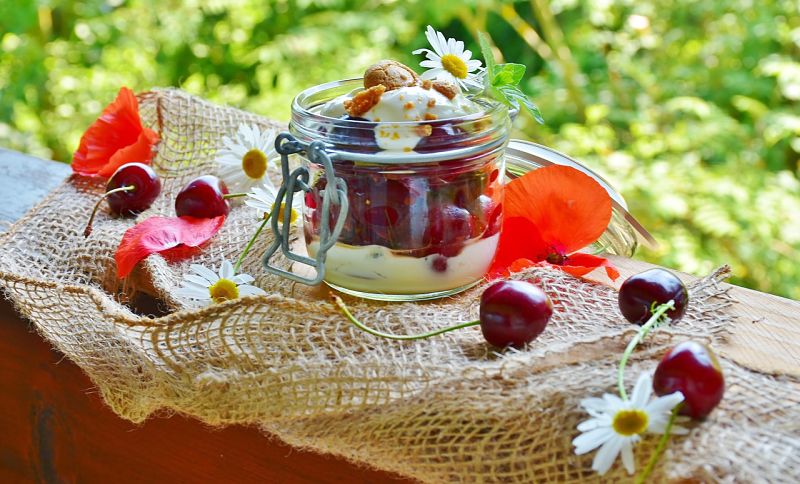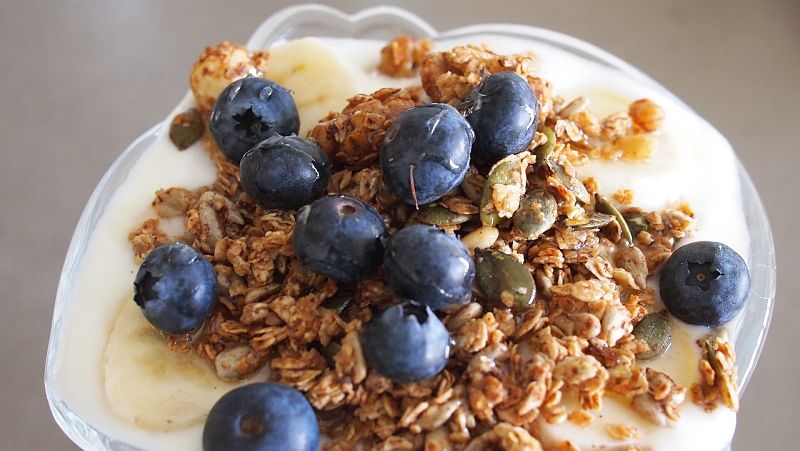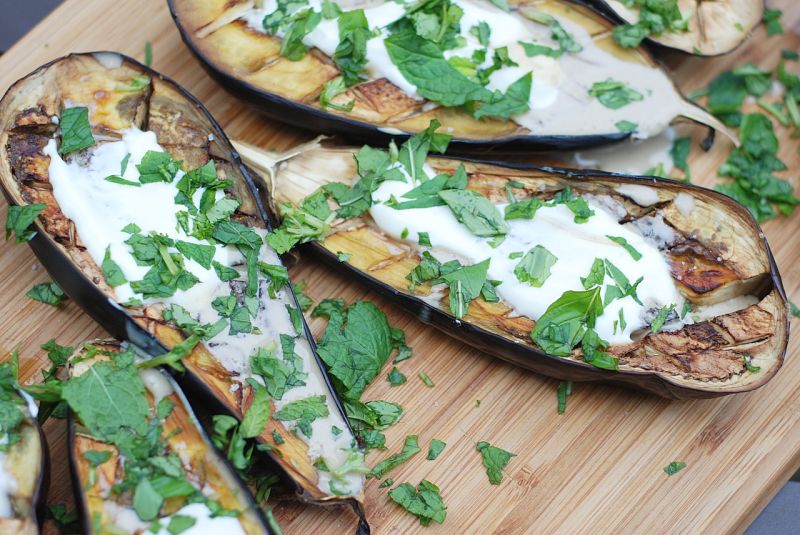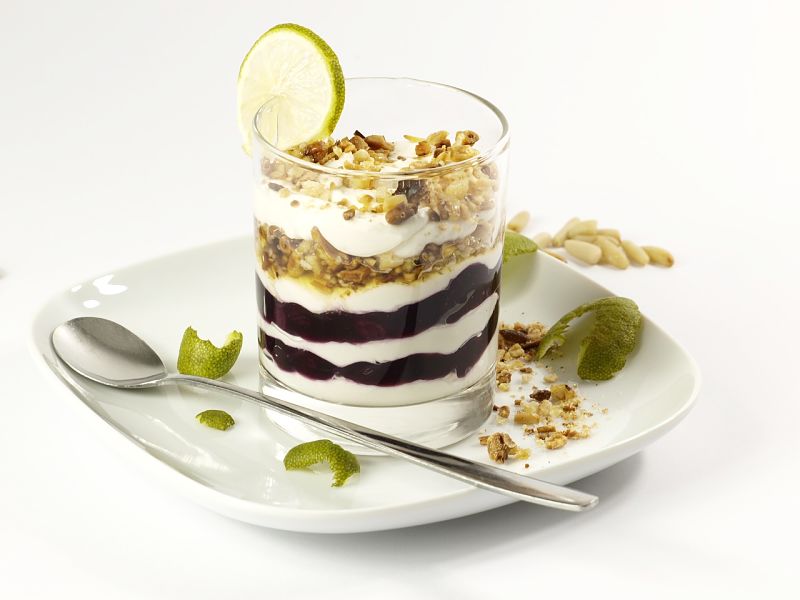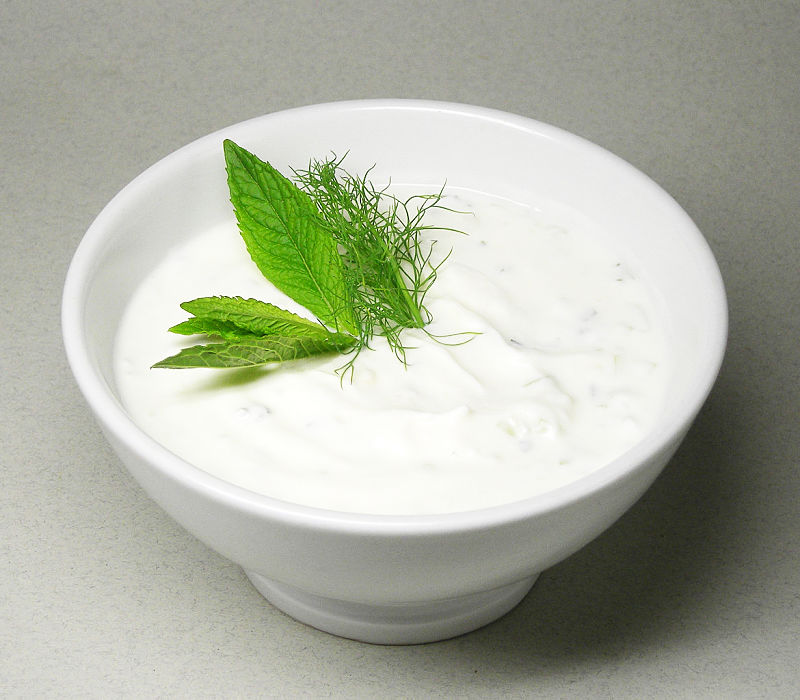Why Frozen Yogurt is Better than Ice Cream, Frozen Custard, Gelato
Everybody loves frozen desserts. About 90% of what is consumed is ice cream. Frozen yogurt accounts for only 5% of sales, but deserves a second look because it is much healthier and is available in some many different products that closely resemble ice cream and frozen custard in taste and texture.
All of these desserts – ice cream, yogurt and custard are based on the same ingredient – whole or low-fat milk. So why is yogurt healthier.
This article presents nutrition data for ice cream, yogurt, frozen custard and gelato to explain the differences.
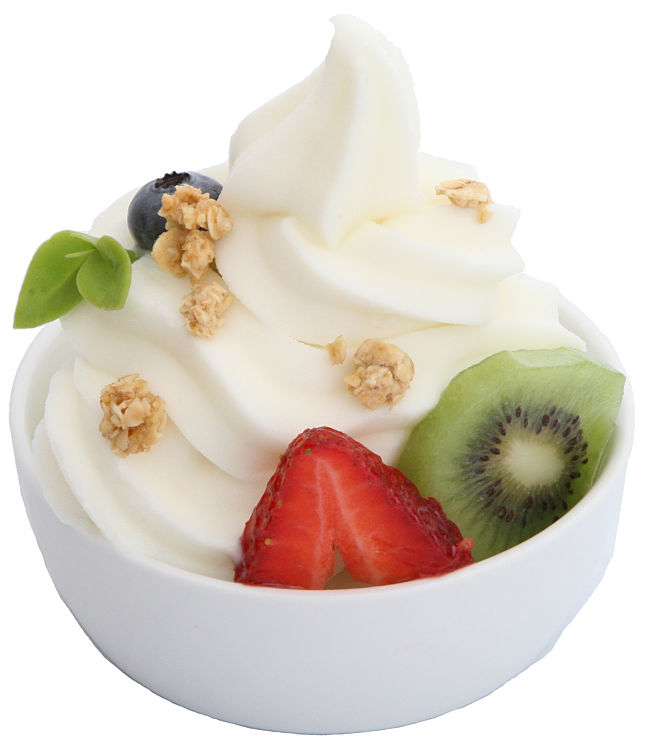
Comparison of Nutrient Data for Yogurt and Milk
|
Nutrient (serving 1 cup)
|
YOGURT - Fat-free Plain
|
MILK - Nonfat
|
MILK - Whole
|
|---|---|---|---|
|
Calories
|
137
|
83
|
149
|
|
Protein (g)
|
14
|
8
|
8
|
|
Carbohydrate (g)
|
19
|
12
|
12
|
|
Sugars (g)
|
19
|
12
|
12
|
|
Fiber (g)
|
0
|
0
|
0
|
|
Total Fat (g)
|
0.5
|
0
|
7.9
|
|
Calories from Fat
|
5
|
0
|
71
|
|
Saturated Fat (g)
|
0.3
|
0
|
4.6
|
|
Cholesterol
|
5
|
5
|
24
|
|
Cholesterol (%DV)
|
2%
|
2%
|
8%
|
|
Sodium (mg)
|
189
|
103
|
105
|
|
Sodium (%DV)
|
8%
|
4%
|
4%
|
|
Potassium (mg)
|
625
|
382
|
322
|
|
Potassium (%DV)
|
18%
|
11%
|
9%
|
|
Vitamin A (IU)
|
17
|
500
|
395
|
|
Vitamin A (%DV)
|
0%
|
10%
|
11%
|
|
Vitamin B12 (ug)
|
1.5
|
1.2
|
1.1
|
|
Vitamin B12 (DV)
|
25%
|
20%
|
18%
|
|
Vitamin C (mg)
|
2.2
|
0
|
0
|
|
Vitamin C (%DV)
|
4%
|
0%
|
0%
|
|
Vitamin D (IU)
|
0
|
115
|
124
|
|
Vitamin D (DV)
|
0%
|
29%
|
31%
|
|
Calcium (mg)
|
488
|
299
|
276
|
|
Calcium (%DV)
|
49%
|
30%
|
28%
|
|
Folate (ug)
|
29
|
12
|
12
|
|
Folate (%DV)
|
7%
|
3%
|
3%
|
|
Iron (mg)
|
0.2
|
0.1
|
0.1
|
|
Iron (%DV)
|
1%
|
1%
|
1%
|
|
Magnesium (mg)
|
47
|
27
|
24
|
|
Magnesium (% DV)
|
12%
|
7%
|
6%
|
|
Phosphorus (mg)
|
385
|
247
|
205
|
|
Phosphorus (%DV)
|
39%
|
25%
|
21%
|
|
Thiamin (mg)
|
0.12
|
0.1
|
0.1
|
|
Thiamin (%DV)
|
8%
|
7%
|
7%
|
|
Riboflavin (mg)
|
0.57
|
0.45
|
0.41
|
|
Riboflavin (%DV)
|
34%
|
26%
|
24%
|
|
Niacin (mg)
|
0.3
|
0.2
|
0.2
|
|
Niacin (%DV)
|
2%
|
1%
|
1%
|
Ingredients and Formulations in Various Milk-based Desserts
Ice cream – Usually regulations, such as those of the United States Department of Agriculture (USDA), specify that a food labelled "ice cream" must have at least 10 % milk fat and 20 % milk solids by weight.
Premium ice cream brands can contain much more fat (14-20% and may include both milk and cream. Sweeteners such as sugar account for another 15 % of the weight.
Frozen custard – The addition of egg yolk is the primary reason frozen custard is different from commercial ice cream.
Generally, according to various regulations, frozen custard must contain at least 1-2% egg yolk by weight, but most brands have much more.
The lecithin in the yolk provides a natural emulsifier, generating a more creamy and richer texture, but at the cost of higher cholesterol and higher calories.
Gelato - Gelato is traditionally made from milk, but with little or no cream.
Frozen yogurt – Yogurt is made from milk that is fermented with various yogurt bacterial cultures.
The fermentation adds protein and many additional nutrients to the milk.
If the cultures are alive the bacteria can help support the growth of "friendly" bacteria in the intestinal tract.
Nutrients in Milk versus Yogurt
Ice cream is made with milk and creams, whereas most yogurt is made without cream.
There are no-fat and low fat varieties of both.
The calories and fat content will automatically be higher if either is made with whole-fat milk or whole-fat cream.
A comparison of the nutrients in a cup of milk and a cup of yogurt is provided in the table opposite.
The table compares the nutrients in fat-free plain yogurt with whole and fat-free milk.
The key points are:
► Whole milk has more calories than yogurt, but non-fat milk has less calories than fat-free yogurt. This is probably due to density as there is more water in a glass of milk
► Yogurt has almost double the amount of protein.
► Cholesterol and saturated fat are much lower in non-fat milk and yogurt.
► Yogurt is richer in many of the key vitamins and health sustaining nutrients: Vitamin B12, Vitamin C, Calcium, folate, iron, magnesium, thiamine, riboflavin, and niacin.
Comparison of Nutrients in Frozen Yogurt, Ice Cream, Frozen Custard and Gelato
The two tables below provide the comparisons for a serving of 1 cup.
The key points are:
► Fat-free Yogurt has only 140 calories compared with 160 for low-fat ice cream and 280 for standard ice cream. Standard yogurt has 240 calories per cup, and frozen custard 360 calories.
► Standard yogurt has only about half the fat of standard ice cream ( 6 g for frozen ice cream versus 14 g for standard ice cream).
► Yogurt has only one third of the amount of saturated fat (4 g) that is in ice cream (12 g) and much less cholesterol.
► Low-fat Frozen yogurt has twice the amount of protein (8 g) as standard ice cream (4 g) and more protein than low fat ice cream ( 6 g).
► Ice cream has higher levels of calcium (16% of daily allowance) than frozen yogurt (10% of daily allowance).
► Ice Cream has higher levels of Vitamin A (16% of daily allowance) than frozen yogurt (6% of daily allowance
► Frozen custard has more calories (411) than ice cream (320) and frozen yogurt (234)
► Frozen custard has almost twice the amount of cholesterol (144 mg) than ice cream (80 mg).
► Frozen Yogurt only has 2 mg of cholesterol in a cup.
► Frozen custard has more protein than frozen yogurt or ice cream, but equivalent amounts to low fat frozen yogurt ( 8 g on a cup).
Conclusion: Is Frozen Yogurt Healthier than Ice Cream?
The answer is "Yes".
Frozen yogurt is healthier than ice cream because it has boosted levels of key nutrients.
Note: The addition of sugar and unhealthy syrups and toppings can make any frozen dairy product unhealthy, including yogurt.
Comparison of Calories and Fat in Various Frozen Dairy Products
|
Frozen Dessert (serving size 1 cup)
|
Calories
|
Fat (g)
|
Carbohydrate (g)
|
|---|---|---|---|
|
Ice Cream
|
|||
|
No-Sugar-Added Ice Cream
|
160
|
8
|
28
|
|
Fat-Free Ice Cream
|
180
|
0
|
42
|
|
Light Ice Cream
|
200
|
6
|
34
|
|
Ice Cream
|
280
|
14
|
30
|
|
Frozen Yogurt
|
|||
|
No-Sugar-Added Fat-Free Frozen Yogurt
|
140
|
0
|
36
|
|
Fat-Free Frozen Yogurt
|
180
|
0
|
38
|
|
Frozen Yogurt
|
240
|
6
|
44
|
|
Gelato
|
480
|
30
|
50
|
|
Custard
|
360
|
20
|
38
|
|
Sherbet
|
240
|
0
|
56
|
|
Sorbet
|
240
|
0
|
74
|
Comparison of Key Nutrients in Ice Cream, Frozen Yogurt and Frozen Custard
|
Serving Size (1cup)
|
Ice Cream
|
Low Fat Ice Cream
|
Frozen Yogurt
|
Low Fat Frozen Yogurt
|
Frozen Custard
|
|---|---|---|---|---|---|
|
Calories
|
320
|
220
|
234
|
260
|
411
|
|
Total Fat (g)
|
20
|
6
|
8
|
0
|
24
|
|
Saturated Fat (g)
|
12
|
2
|
4
|
0
|
15
|
|
Polyunsaturated
|
0
|
0
|
0
|
0
|
0
|
|
Monounsaturated at (g)
|
0
|
0
|
2
|
0
|
0
|
|
Trans fat (g)
|
0
|
0
|
0
|
0
|
1
|
|
Cholesterol (mg)
|
80
|
10
|
2
|
10
|
144
|
|
Vitamin A (% daily allowance)
|
16
|
0
|
6
|
0
|
0
|
|
Vitamin C (% daily allowance)
|
0
|
0
|
2
|
0
|
0
|
|
Sodium (mg)
|
140
|
140
|
126
|
120
|
112
|
|
Potassium (mg)
|
0
|
0
|
304
|
0
|
0
|
|
Total Carbs (g)
|
34
|
42
|
34
|
46
|
40
|
|
Dietary Fiber (g)
|
0
|
0
|
0
|
0
|
0
|
|
Sugars (g)
|
32
|
28
|
34
|
40
|
36
|
|
Protein (g)
|
4
|
6
|
6
|
8
|
8
|
|
Calcium (percent daily allowance)
|
16
|
20
|
10
|
0
|
0
|
|
Iron (percent daily allowance)
|
0
|
0
|
1
|
0
|
0
|
Related Articles About Yogurt and Great Yogurt Recipes
=> Yogurt Marinated Chicken Recipes for Barbecue or Grill
=> Homemade Yogurt - How to Make Your Own Yoghurt - Tips and Recipes
=> How Healthy is Yogurt - Homemade vs Commercial Varieties Comparison Charts
=> Grilled Smoky Eggplant Yogurt Dip Recipe
=> Crispy Coconut Shrimp Batter Recipe, with Yogurt, Mango, Chive Dip
=> Spicy, Savory, Easy Pumpkin Pie with Molasses, Almond Flour, Yogurt

